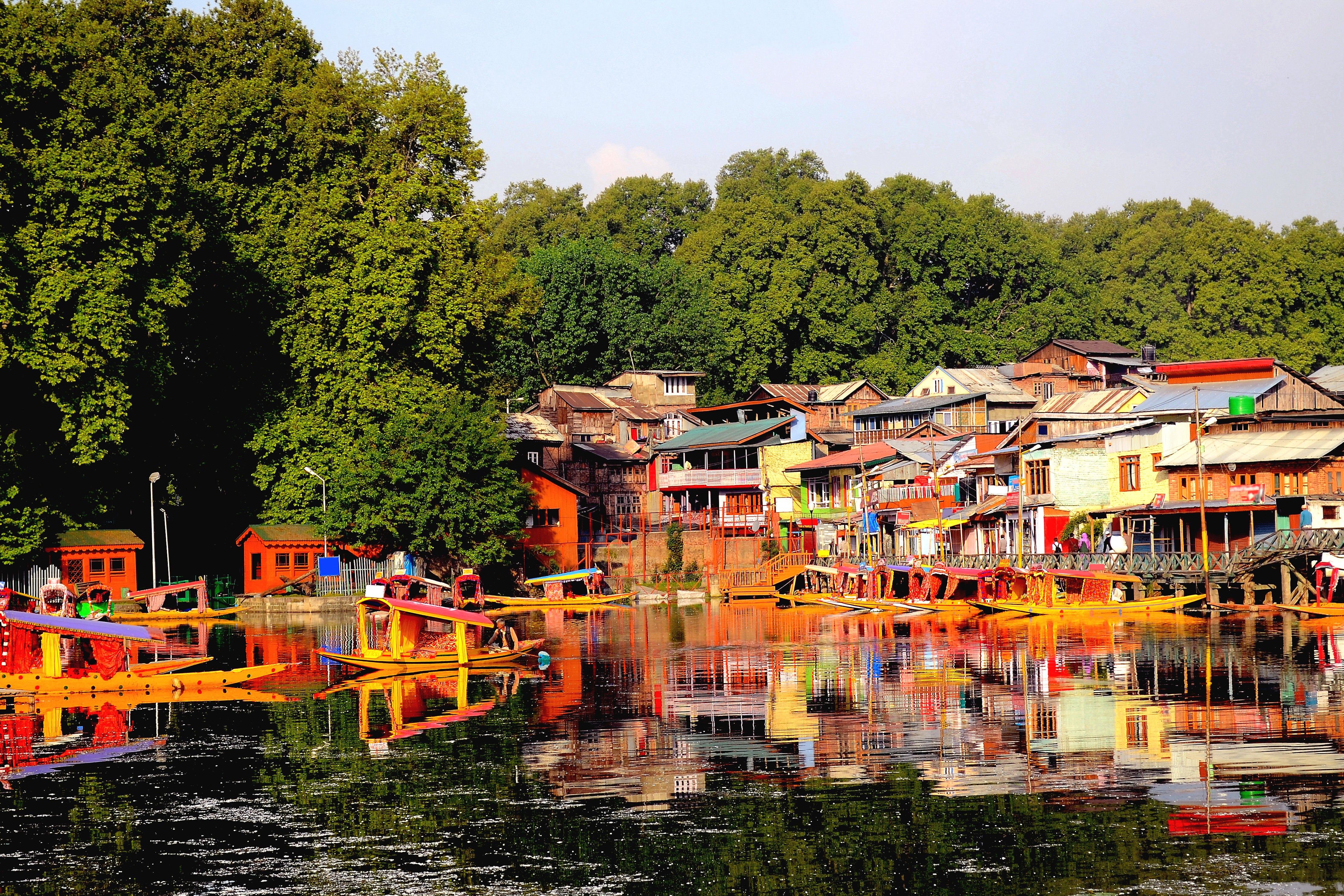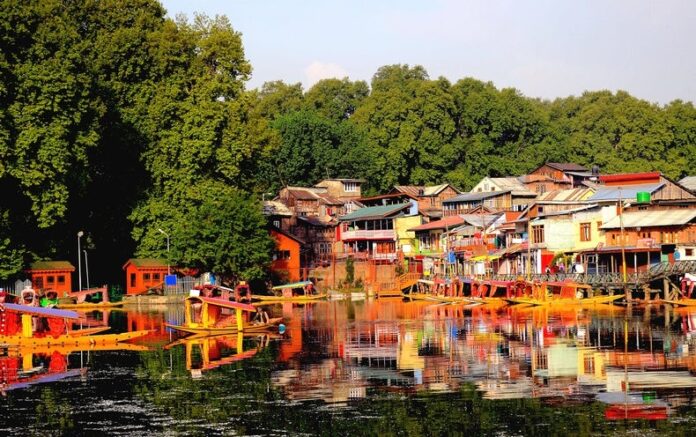
Kashmir, the northernmost region of the Indian subcontinent, is famous for two things: landscape and conflict. The scenic valley from which it gets its name, some 90 miles long and 25 miles wide, was born from the collision of the Indian and Eurasian plates and is guarded by the snowcapped Himalayan Mountains above. But more than seven decades of conflict have severely damaged the political and cultural fabric of the region, denying it much-needed development in science and technology. Nowhere is this truer than in earthquake safety.
In mid-June, a small-magnitude (5.0) earthquake struck the Bhadarwāh area of the India-governed territory of Jammu and Kashmir, part of the overall Kashmir region. Many buildings developed cracks, and five people were injured, including two students. Earthquake hazard is built into the tectonic fabric of the geography, given its location at the crux of two active plates. But hazard turns into disaster because in Kashmir, as elsewhere, construction has shifted from the more traditional resistant wood-based buildings to concrete. This small earthquake is a prelude to what geologists, including myself, have warned: a major earthquake is due in Kashmir, and millions of lives are at risk because they live or work in collapse-prone buildings. The last major earthquake in the region, in 2005, killed 80,000 people.
To restore architectural resilience in the region, we must turn back to traditional ways of building. Government at all levels must both promote earthquake safety in construction and treat local earthquake science with the seriousness it deserves. India’s population is growing, particularly in Kashmir, so millions of lives are at risk.
Many earthquakes remain lost to history, but the available data suggest that 14 major earthquakes, the scars of which are engraved in the topography and sediments of the region, have occurred in Kashmir’s recorded past. The traditional construction designs include the Taq and Dhajji-Dewari styles. These types of buildings, seen in places like Srinagar, have either masonry-bearing walls (Taq) fastened with timber or a rectangular timber framework filled with masonry (Dhajji-Dewari). The design was popular in the 19th century and persisted until the beginning of the 20th century, when modernization overwhelmed Kashmir’s traditional wood and brick architecture with constructs of poorly fabricated indigenous concrete.
The transition happened for economic reasons: wood is expensive, not readily available, and acquiring it requires a lengthy administrative procedure. Its persistence is because the knowledge of wood construction has been lost; engineers in Kashmir mainly learn concrete design in school. This is, to me, a sign of the retreat of earthquake science and technological wisdom, because earthquake engineers tell us that traditional Kashmiri construction design is much safer.
The timber beams are flexible shock absorbers, giving a structure much-needed elasticity to endure earthquake-induced shaking. The 2005 earthquake tested the resilience of these old structures, which performed much better than modern houses. Many homes that used the traditional construction style survived and were not severely damaged. Concrete houses, built with no earthquake-centric design, tumbled like a deck of cards. The idea of building these structures to withstand shaking is not part of modernized culture, whether governmental or aesthetic; India’s first national seismic code was developed in 1962 and has been revised since, but for a long time it was voluntary, and now that it isn’t, it’s still not enforced in Kashmir. My family, friends and relatives have not followed seismic safety procedures when constructing their dream homes, because they don’t think it’s compulsory.
Changing culture is therefore critical. California and Kashmir share a similar tectonic and geographic framework: stunning scenic views of a long and wide valley, surrounded by equally mesmerizing mountains ornamented with snow and forest cover. The tectonic plate boundaries have made both regions prone to earthquake hazards. California’s lawmakers decided long ago to retrofit existing building and install a seismic code insisting buildings resist earthquake-induced shaking. Many people weren’t happy, but the culture shift happened, and earthquake engineers and geologists are certain that many of California’s buildings—and the people in them— are safer as a result.
Whenever I visit Kashmir, the ground preparation to withstand earthquakes seems to have stayed unchanged; the buildings are a pile of often beautifully decorated concrete blocks ready to tumble during an earthquake. It brings to mind not just the 2005 Kashmir quake, but this past February’s devastation in Turkey and Syria, where earthquake building regulations were not followed. It is a nightmare for earthquake scientists to stand on the ground and do nothing about it. Unfortunately, we have no direct role in creating seismic regulation and safety measures. Who will take responsibility? Government agencies in Kashmir have to wake up and take serious steps in safeguarding people from earthquake hazards, such as rigorously mapping the seismic vulnerability of buildings quickly, as has been done in Chile and Japan.
People need a soft push from the Indian government to follow earthquake safety procedures in construction and lifestyle, which has yet to start. The job is enormous but necessary for the safety and future of Kashmir. The international community could help by providing aid and building a collaborative network for earthquake science, engineering and outreach activities. It could be game-changing for the earthquake scientists and engineers of the valley, who often need help to get the right resources and funding to fill knowledge and technological gaps by directly working on the ground.
All of this is a challenge in a part of the world that is so politically unstable. Kashmir, which is often described as paradise on Earth, is in deep crisis. The rich cultural heritage of Kashmir is unparalleled; we are known world over for the pashmina shawl, the shikara or houseboat, and yes, traditional wooden houses and bridges built to withstand earthquakes. This knowledge, put aside but not forgotten, gives hope that Kashmiri culture will shift towards earthquake safety. This shift must accompany political moves toward the welfare of residents and peace in the region—all ingredients for this natural paradise to survive.
This is an opinion and analysis article, and the views expressed by the author or authors are not necessarily those of Scientific American.







